Métis artist and associate professor David Garneau is working on a two-year art commission for the City of Edmonton. When it’s complete, the 400-piece work will span the 200-metre underside of a light rail transit and pedestrian bridge across the North Saskatchewan River. The location is especially significant to Garneau – it’s only a short distance from where his great-great-grandparents settled as one of the first families in the Alberta capital.
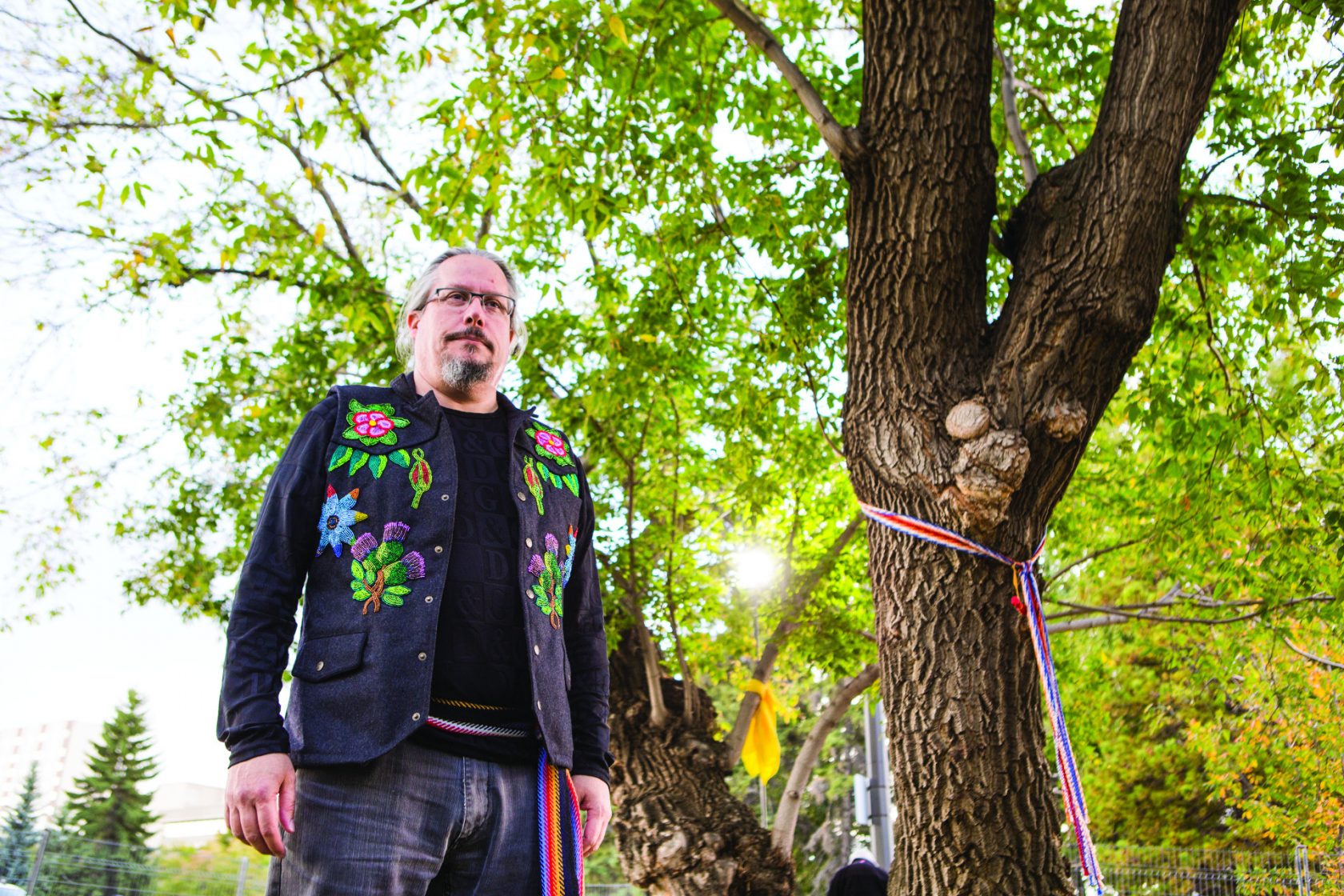
David Garneau’s artworks have been exhibited nationally and internationally in group and solo shows. His work can be found in numerous collections, including the Canadian Museum of Civilization in Ottawa, Canadian Parliament, the MacKenzie Art Gallery, the Saskatchewan Arts Board and the City of Calgary. His most recent installation, however, is in an unconventional location: underneath the new light rail transit (LRT) Tawatina Bridge in Edmonton.
This is the first time the Métis artist has attempted a project of this scale. “I’ve done murals in the early 80s at daycares in Calgary, but nothing close to this,” he says.
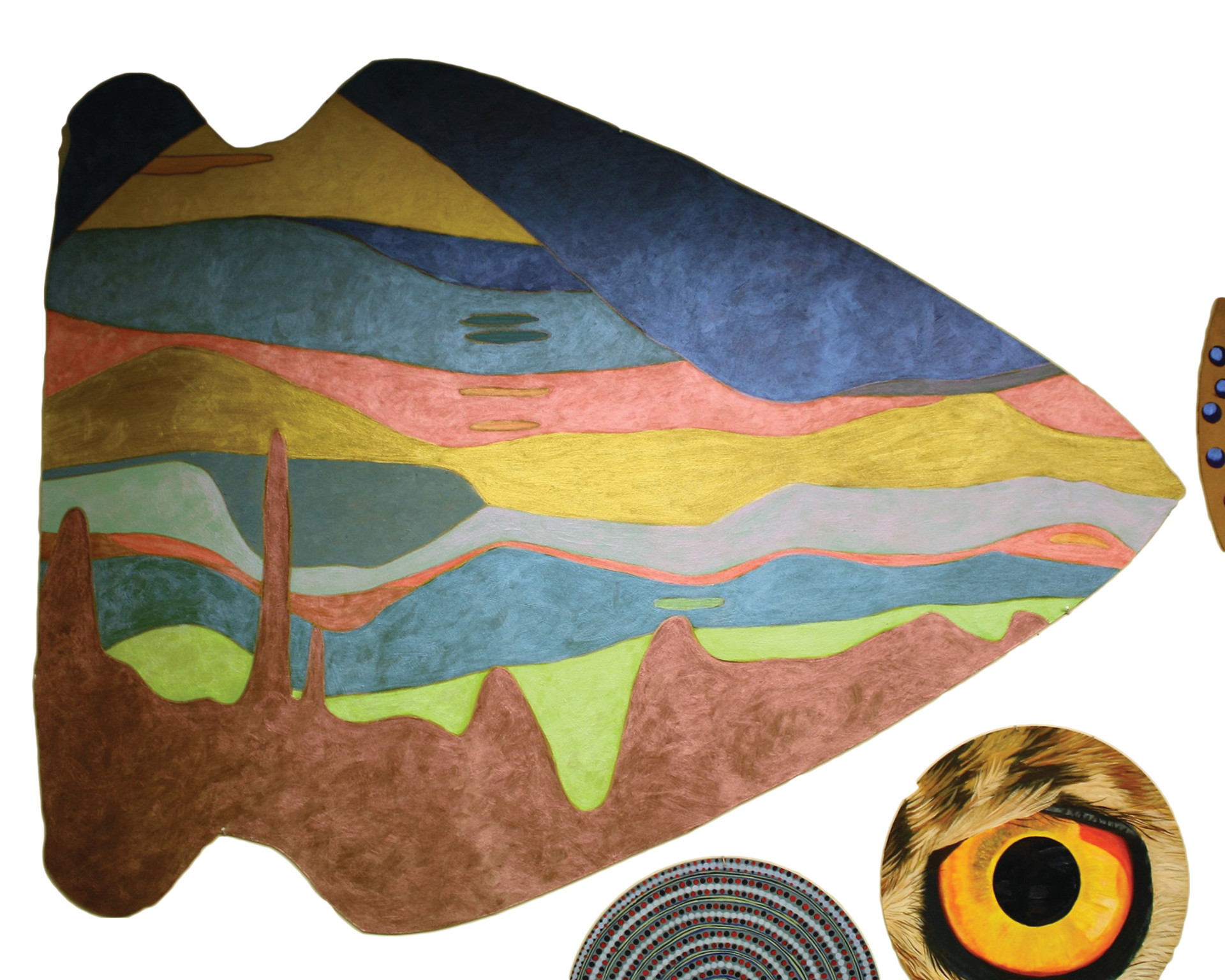
Garneau was inspired to apply for the Tawatina Bridge public art commission after he was involved in the consultation process for an Indigenous Art Park in Edmonton. He was one of six artists brought in by the city to give advice on best practices for Indigenous art commissions. As a result, meaningful consultations with Indigenous Elders, community members and artists were part of the process for both the art park and the LRT bridge commissions.
“This project will bring lots of visibility to MAP, to our faculty and students,” says Rae Staseson, dean of MAP. “It is so exciting to watch the work develop and to see students being mentored on this project. It is transformative in so many ways, and demonstrates the strength and quality of the work being produced by Indigenous artists in this province, and particularly at the University of Regina, where David is an important mentor and teacher of emerging artists.”
“The fact that Métis culture is represented in this project is crucial to me. Métis culture was forced underground. People are rediscovering it, but this resilience must come with enrichment.”
Robert Harpin, public art officer with the Edmonton Arts Council, which is engaged by the City of Edmonton to manage the public art program, says that Garneau’s work was chosen because of its ambitious nature. Originally, he had proposed 100 paintings for the project, which impressed the council. Since acquiring the commission, Garneau has quadrupled the amount of work to be created.
“He is such a respected artist in Canada,” Harpin says. “These are all original paintings going on the underside of this bridge. It’s not just about the numbers, though. A lot of public art doesn’t have the artist’s hand quite the way this piece will.”
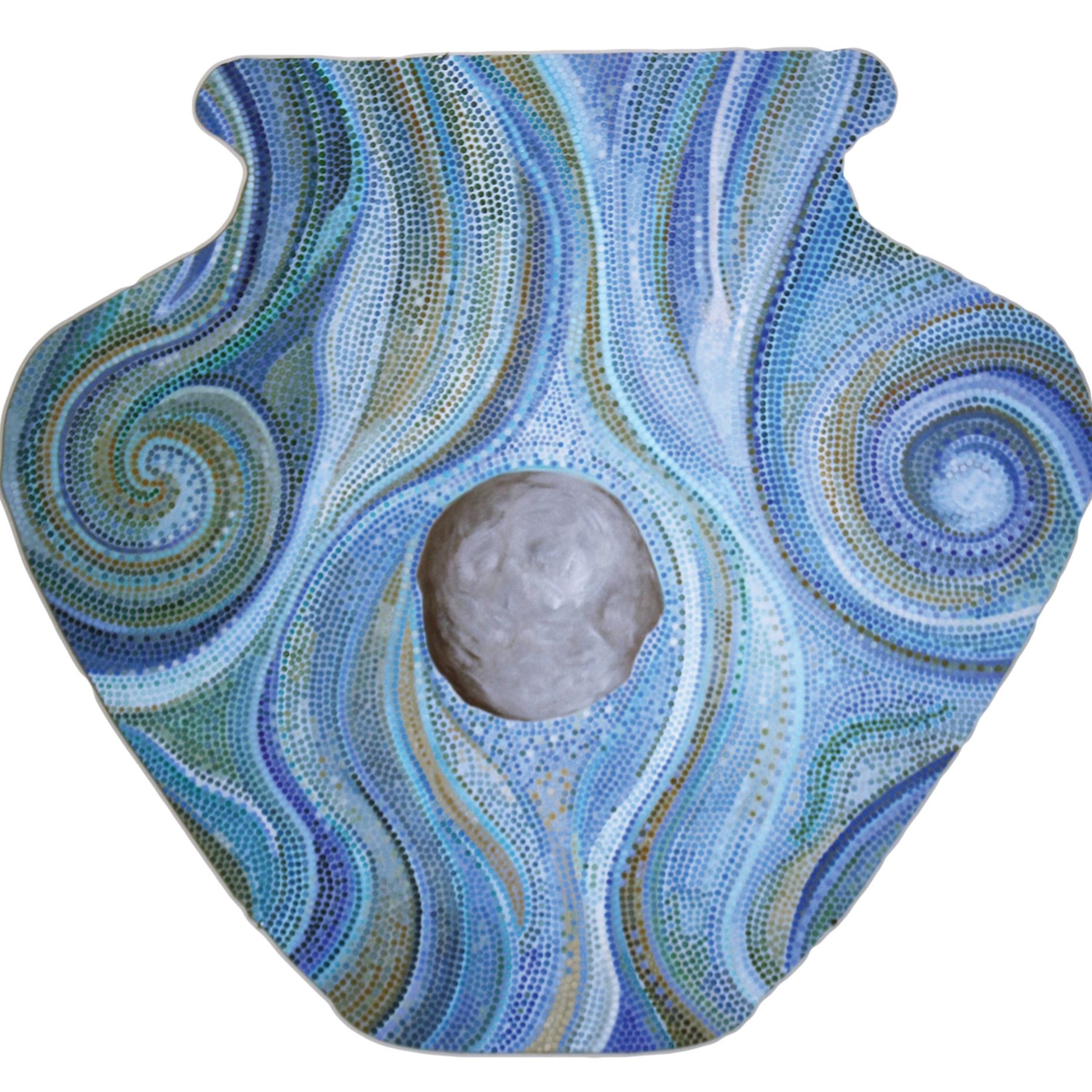
Harpin calls the amount of consultation Garneau has committed to “absolutely staggering and critical to this project.” In addition to combing through the Métis beading and other material culture at the Royal Alberta Museum, Garneau continues to engage with Indigenous people around the city, especially the Métis Nation of Alberta, and Chief Calvin Bruneau and members of the Papaschase Band. He is also soliciting stories and feedback through the project’s website (tawatinabridgeartproject.ca).
While the themes and style are primarily Métis and Cree, Garneau also wants to refer to other peoples of the region. For example, he met recently with Nii Koney and members of the Nile Valley Foundation about representing the African Diaspora.
“It’s not just the stories of the Indigenous community, rather it’s the stories of the people of this place that he’s engaged in this particular project,” Harpin says. “The amount of research and connection to various communities is on a level that I’ve never seen a public artist take on. It’s absolutely remarkable. There’s often a lot of contention around public art, but this piece – David is extending himself so far beyond what the average public artist would be doing. It’s kind of a coup for the city – I’m personally thrilled that we have a massive David Garneau project going in. It’s an honour for us, and I hope he’s getting a lot out of it.”
For Garneau, consultation is essential. “I feel the weight of the Métis and First Nations community on my shoulders,” he says. He made six trips to Edmonton in the year since receiving the commission to engage with Elders and community members, seeking out their ideas of imagery that should be included in the project. A significant portion of his budget is dedicated to the consultation process, making sure that Elders and others are paid for their cultural consultation and showing them that the project is being taken seriously. “This is not the expression of an individual artist, but an expression of a community and an individual artist working together. That’s the part I’m most excited by.”
Consultation also helps to ensure that the resulting public art project is authentic and does not upset members of the community. A recent controversy took place in Calgary, where a New York artist created public artwork that offended local First Nations, as they felt it emulated Indigenous burial scaffolding. Before accepting the commission, Garneau researched public art, even giving a lecture in Canmore about why bad public art happens. He says the culprit is usually juries made up of community people who understand communities and artists who understand art, but neither understanding the unique field that is public art.
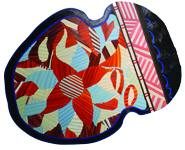
“Working with the community and Elders has been the most joyful part of this project. People are excited to have their stories represented. While I hope my team and I will make something beautiful and of lasting visual interest, the paintings respond to the site, its history, and will have some unsettling content,” says Garneau.
The 400-piece scope of the mural also acts like a fail-safe mechanism. “If I unintentionally upset someone, I can take that part of it out.”
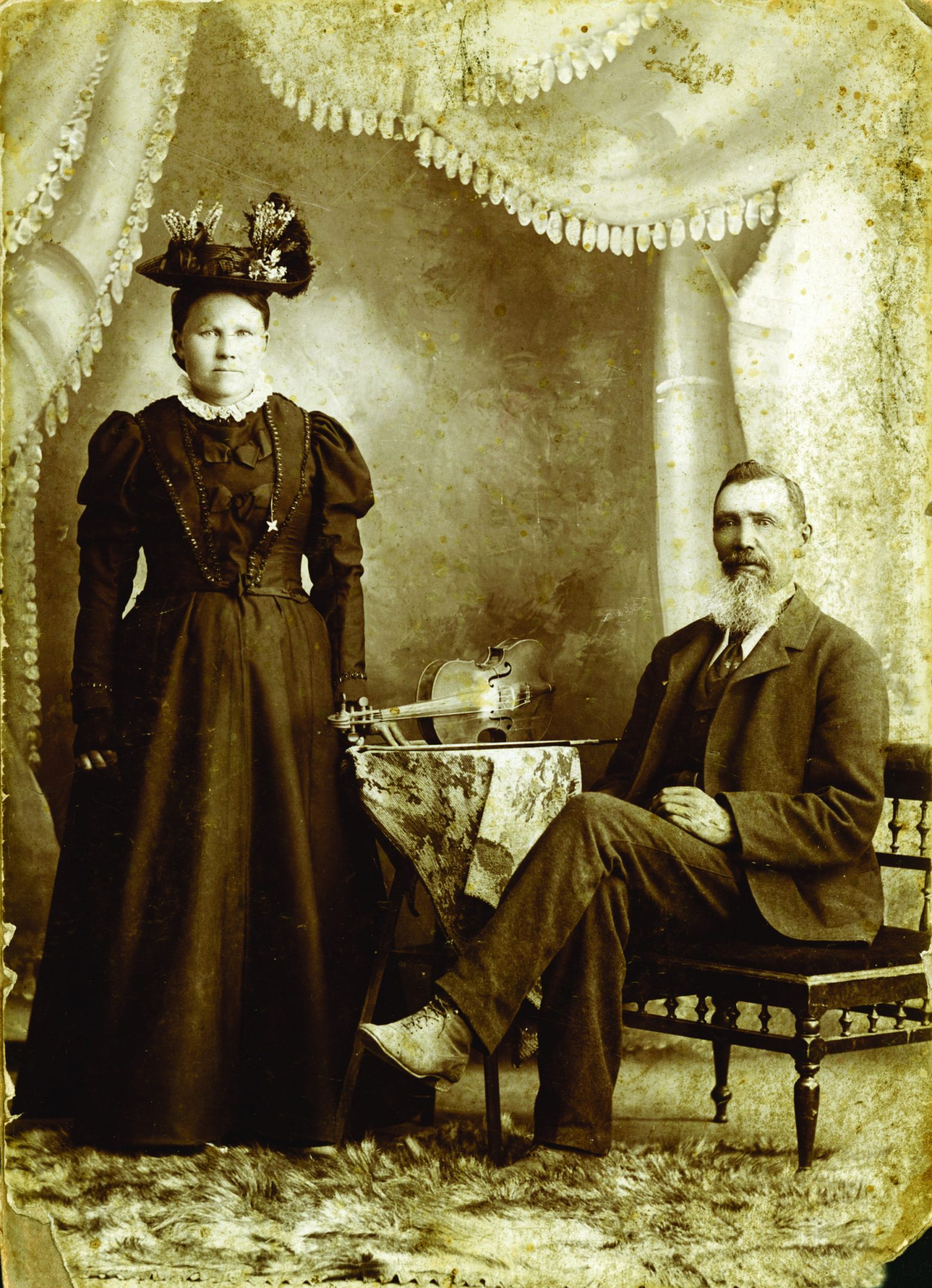
The Garneau legacy made the news in September when a tree that Eleanor planted was declared unsafe due to rot and was slated to be removed. The tree is in the City of Edmonton’s inventory of historic resources, usually reserved for buildings, and is well known among residents.
The community came together in celebration of the 143-year-old Manitoba maple with a ceremony and Métis kitchen party hosted by Cheryl L’Hirondelle, David Garneau, the University of Alberta and the Métis Nation of Alberta. Garneau flew back to Edmonton for the occasion and was among hundreds of attendees, many of whom had ties to the Garneau family. Thanks to the generosity of the University of Alberta, wood from the tree is being salvaged, dried and milled, and will be distributed among interested family, community members and Métis carvers.
The community came together in celebration of the 143-year-old Manitoba maple with a ceremony and Métis kitchen party hosted by Cheryl L’Hirondelle, David Garneau, the University of Alberta and the Métis Nation of Alberta. Garneau flew back to Edmonton for the occasion and was among hundreds of attendees, many of whom had ties to the Garneau family. Thanks to the generosity of the University of Alberta, wood from the tree is being salvaged, dried and milled, and will be distributed among interested family, community members and Métis carvers.
The relationship between the Garneaus and the Papaschase Band continues today, with the artist consulting with the current chief in order to incorporate Papaschase history into the public artwork. “He told me things about my family that I didn’t know,” he says.
One challenge Garneau faced in expressing Métis themes in his work is that, traditionally, Métis people didn’t paint much, making it difficult to use Métis painting as a source for contemporary art. Instead, Garneau is looking to Métis beadwork from the area as major inspiration, translating the beads into painted dots.
“The fact that Métis culture is represented in this project is crucial to me. Métis culture was forced underground. People are rediscovering it, but this resilience must come with enrichment,” he says. “For a long time, Métis culture focused on Batoche in 1885. That moment is important, but should not stand as the paragon of Métisness. I am excited to contribute to the continuation and advancement of Métis culture.”
Some of the panels of the mural are based on archival photos and others are more playful. “The long (200 metres) bridge format gives me a lot of freedom. When an artwork is on a wall, there’s a certain weight to it. When painting for the ceiling, you can take advantage of that space and feel that weightlessness.”
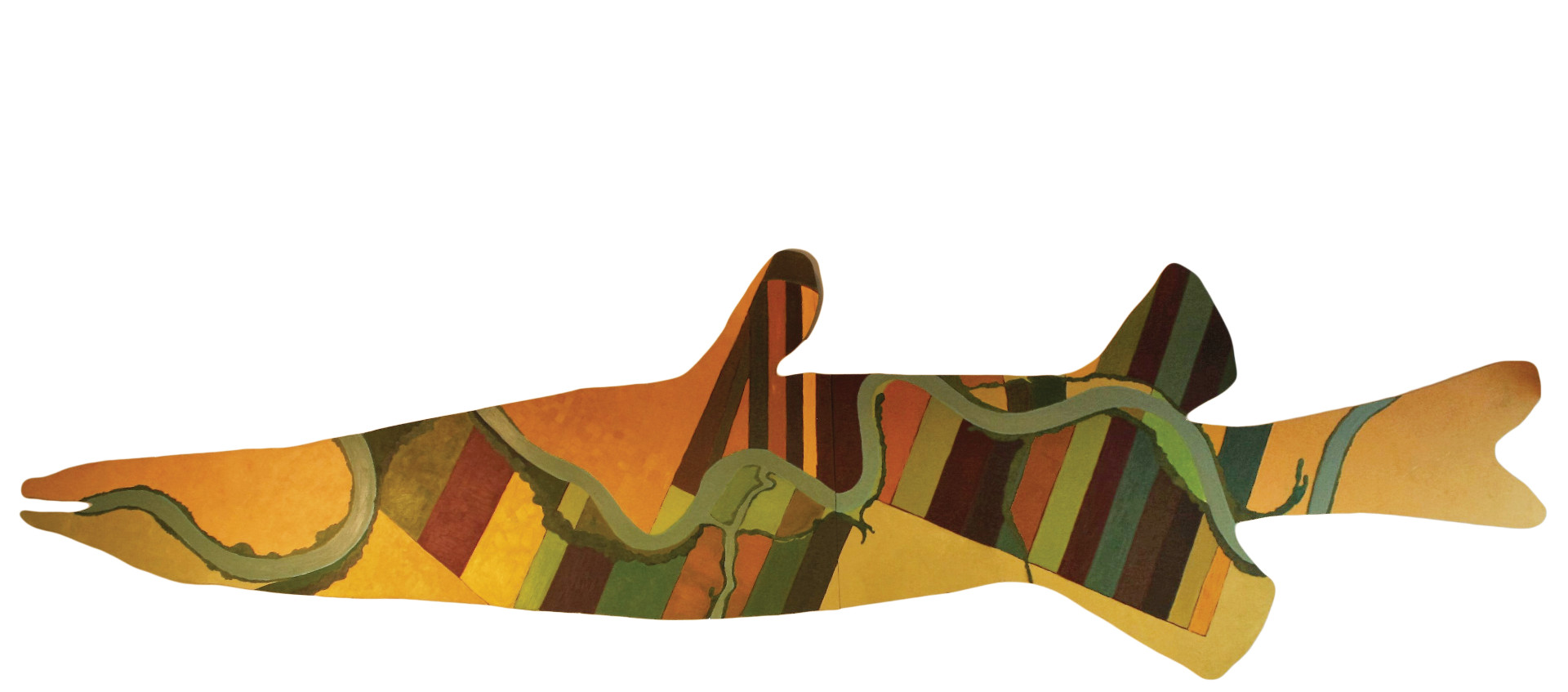
He created an animated crow using 30 still images of the bird to make it look like it is flapping its wings as you walk below it. A dozen cranes will be arranged in a spiral, varying from twenty centimetres to two and a half metres. There is a large painting of the inside of a teepee, from the vantage point of someone lying inside it and looking up at the sky peeking out between the poles. One hundred little fish will “swim” throughout, including representations of all the different kinds of fish that live in the river flowing under the bridge.
A top hat with a beaver painted in it is a reference to the fur trade – Edmonton is known in Cree as Amiskwaciy or “beaver hills.” A painting of a Google Earth image of the old bridge being taken down, as well as a representation of some of the carvings people had made in that bridge, are nods to a structure beloved by many in the Edmonton community.
While some images are obvious representations, others are attached to stories and local knowledge; this artwork requires storytelling to become complete. When finished, Garneau will give talking tours of the project. After that, the stories will not be written down; it will be up to other storytellers to narrate the painting cycle. “Some stories are not mine to tell. I have been asked to make an image, but the story can only be unlocked by those gifted with the responsibility of the story,” explains Garneau.
This echoes his work as a co-curator (with Michelle LaVallee) on the project Moving Forward, Never Forgetting at the MacKenzie Art Gallery in 2015. As part of that exhibition, the Aboriginal artwork was activated by stories told by a story keeper rather than by words printed on paper. “I can see schoolchildren reading this mural like a book,” he says. “My ideal viewer would be lying on a longboard looking up, watching it flow like a river or like the movement of clouds.”
Garneau knew he would never be able to complete a project of this scope on his own. He has engaged mostly Indigenous University of Regina students and recent graduates, a team of graffiti artists in Edmonton led by AJA Louden, and his two children, B and Cassandra, to help. They are doing the prep work – sanding and priming the 400 plus pieces – as well as some of the painting, under Garneau’s mentorship. He expects about half of the project costs will go toward preparation and labour. “It’s important to me to have students involved, not just in the painting, but hearing the stories and getting experience for future commissions. I think this is something we could teach in the future,” he says.

Garneau’s main student assistants for the project include Matthew Lapierre, Mackenzie Grad BFA’17, Sadie George, Evan Obey, Sarah Timewell, David Zhang and Madhu Kumar BFA’17. Kumar, originally from India, had the distinction of painting a portrait of Chief Papaschase on the shape of a cloud, among other works. “I felt the practical knowledge of painting connected me more to Indigenous people. These are all Indigenous people’s stories that are true and real, and you feel that,” she says.
“This is a once-in-a-lifetime experience. In 2015, I went to Rome and saw the Sistine Chapel. I went there twice to see it. And I stood there a long time dreaming about it. It seems my dream has come true through David’s project,” she says.
A substantial amount of work has been done on the project already. By next summer, Garneau will be in the studio, painting full time. Two years seems like a long time, but with a busy academic schedule, giving talks across Canada and writing book chapters, he knows it will fly by.
In addition to serving as a beautiful work of art for Edmonton residents to appreciate, the project serves as an important metaphor. “This is a traditional transit space for Métis, Indigenous and other peoples; a bridge between two settled sides of the river bank. It’s about the conciliation between settlers and Indigenous peoples and taking the middle space seriously,” Garneau says.
Photos by Trevor Hopkin, University of Regina Photography Department unless otherwise noted.
Artwork photos courtesy of Jill Ferron, FERNxDesign.

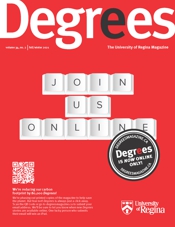

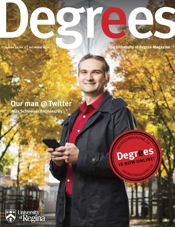
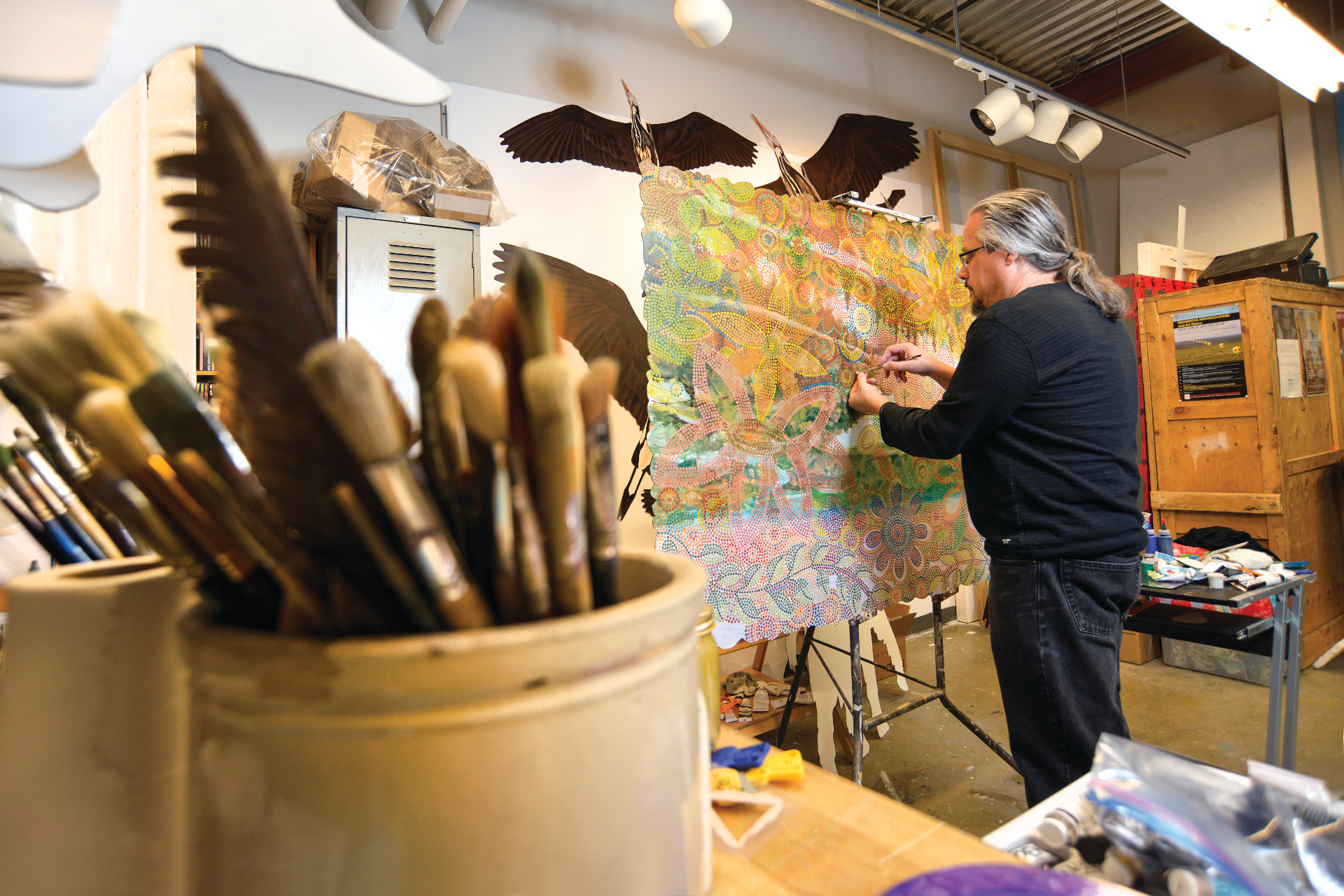
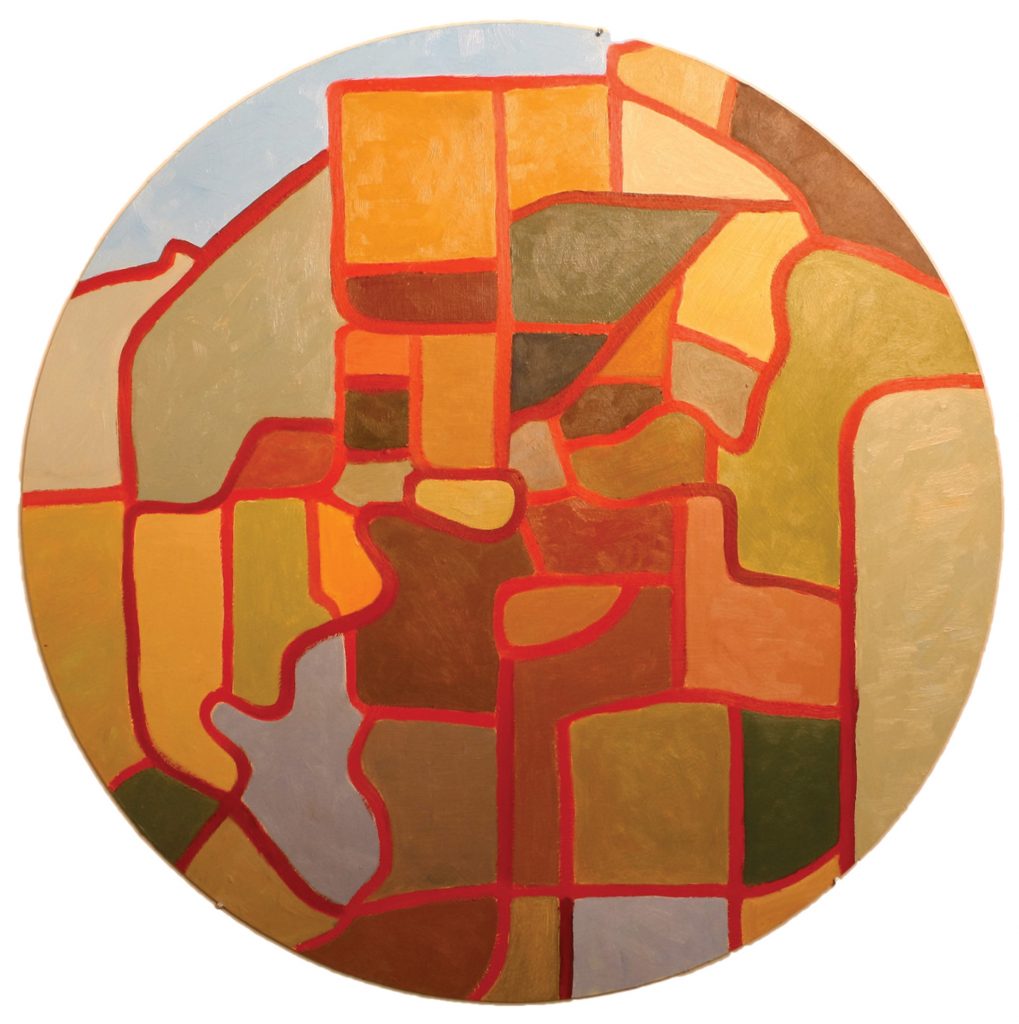


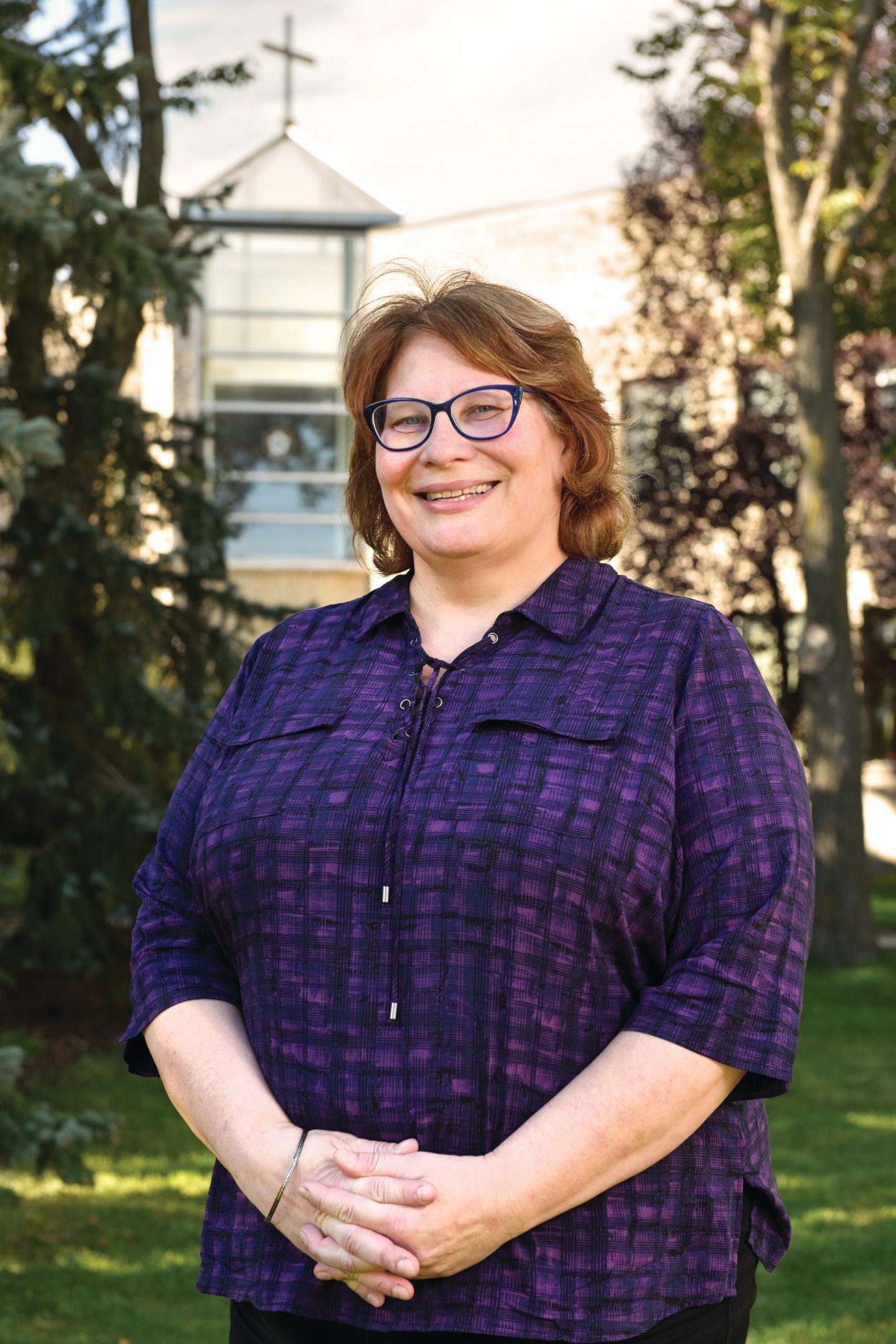 Luther College Women’s and Gender Studies and Religious Studies associate professor Brenda Anderson
Luther College Women’s and Gender Studies and Religious Studies associate professor Brenda Anderson
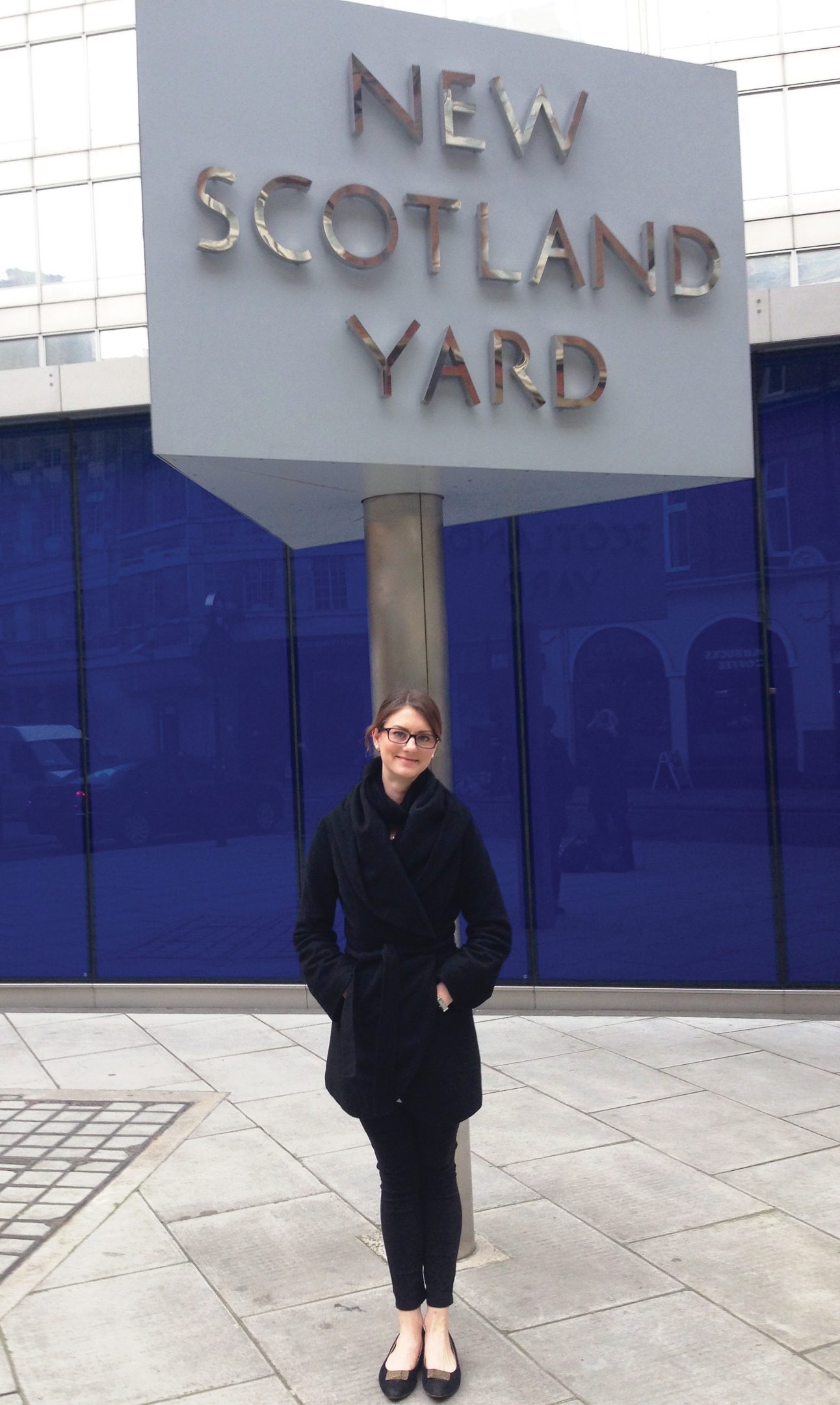 Joana Cook poses at the Scotland Yard sign in front of the Curtis Green Building on the Victoria Embankment.
Joana Cook poses at the Scotland Yard sign in front of the Curtis Green Building on the Victoria Embankment.
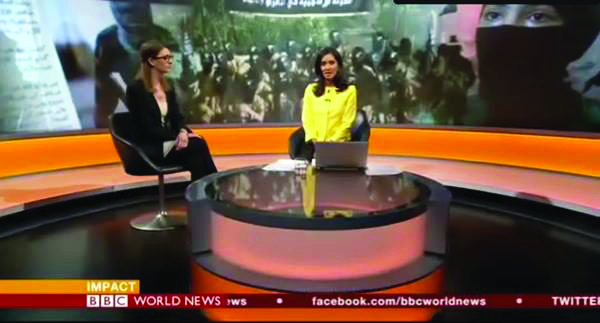 Joana Cook on BBC World News talking about women and children in ISIS.
Joana Cook on BBC World News talking about women and children in ISIS.
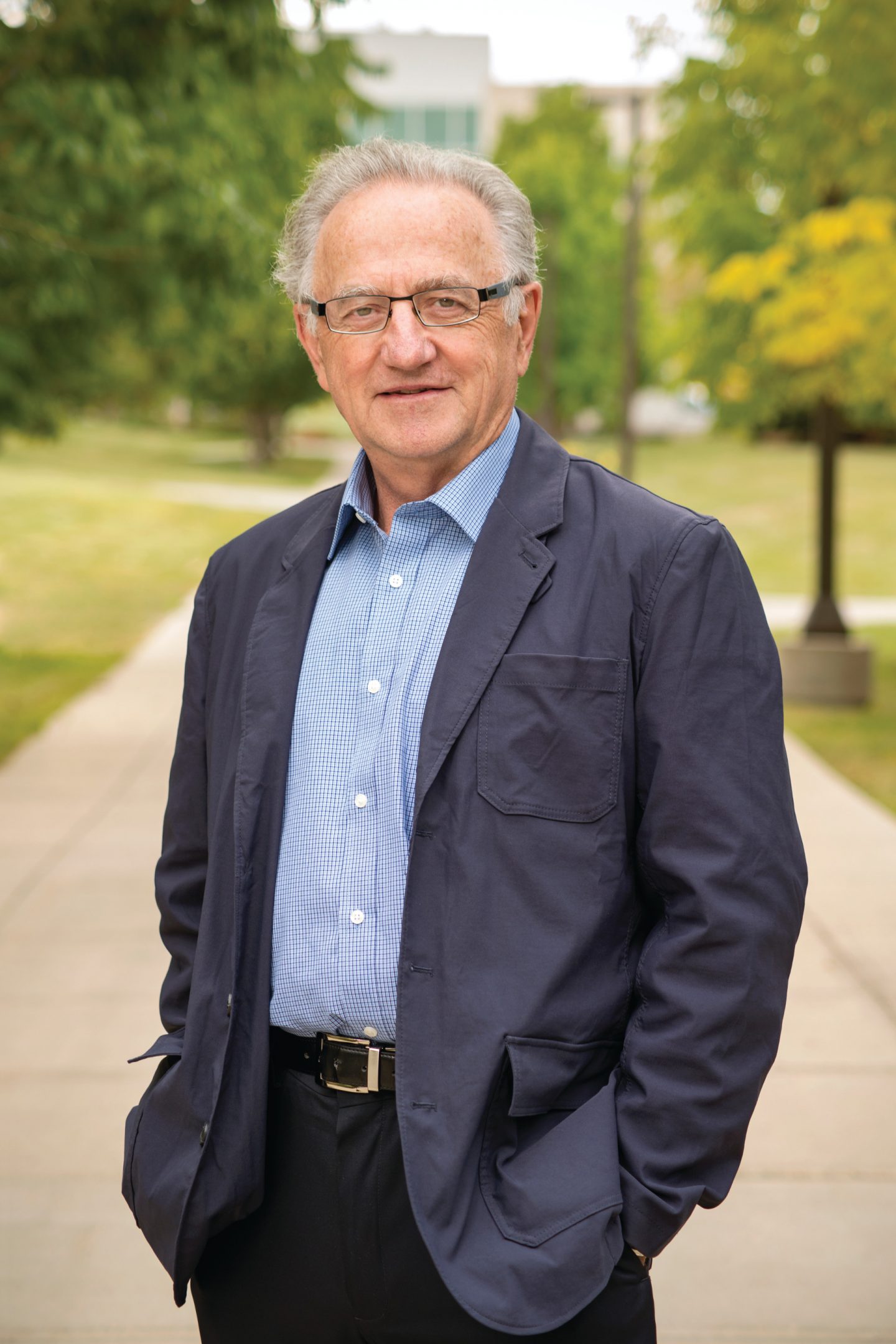 Dale Eisler is a senior policy fellow at Johnson Shoyama Graduate School of Public Policy, with a focus on energy policy and Canada-U.S. relations. He is also a senior advisor on Government Relations to University of Regina President Vianne Timmons. (Photo by Trevor Hopkin)
So you can add a moral dilemma to the geopolitical mix. In effect, the developed world is asking poor, underdeveloped nations not to do what we’ve done and use cheap fossil fuel energy sources to develop their economies, and improve their standard of living and quality of life. They need to skip that part in the development cycle and go straight to a more expensive modern, green, renewable energy economy and society.
A person could go on with other complicating factors, such as how to price the future costs of climate change in current dollars, but the point seems clear. Addressing climate change is arguably the most, or one of the most, difficult public policy issues on the world agenda. Which brings us back to the climate change policy standoff between Ottawa and Saskatchewan.
The ongoing friction between the two governments demonstrates the perils of trying to get agreement on the coordination of climate change policy. A key dimension of the Trudeau government’s Pan-Canadian Framework on Clean Growth and Climate Change is to establish a national price on carbon. The federal government intends to have a minimum $10 a tonne price on carbon in place nationally next year. If provinces don’t implement the price – which rises $10 a year to $50 a tonne by 2022 – Ottawa will impose the price. It can be in the form of a carbon tax, or a regulatory instrument like a system of cap and trade on heavy GHG emitters. The federal plan calls for all revenue raised by the carbon price to remain in the jurisdiction where it is generated – any money from the carbon price paid in Saskatchewan will go into provincial coffers, to be spent any way the provincial government sees fit.
The policy argument for a carbon price is grounded in sound market economic principles. Simply put, price is the mechanism we use to efficiently allocate resources. Ideally, price is a reflection of both supply and demand for something, as well as the external costs that result from its production. The more something costs will tend to reduce its demand. When CO2 has no price, its use is unconnected to the costs it imposes, in this case the effects of climate change. So, in a proper-functioning market environment where carbon has a price, the social harm created by the burning of fossil fuels would be included in the price.
That is about as far from a radical idea as you can get. It is Economics 100 dogma and how we treat virtually everything else in the private market. Yet when it comes to climate change policy, the talk of a carbon price can make some heads explode.
The reason it does has many layers, some more visible than others.
But the key one relates to the strength of policymakers’ belief in the urgency of the climate change issue and how that correlates with public opinion. The fact of the matter is that to seriously address climate change requires a significant change in public behaviour now for the benefit of future generations. It amounts to a leap of faith. People need to believe they can make a difference and that the cost to them today is justified by the benefits others will derive from the change long after most of us are dead and gone.
Determining the public’s willingness to act is a political calculation that is hard to discern. Public opinion research suggests that, in the abstract, a significant majority of Canadians believe climate change is happening and is an important policy priority. But whether that opinion will withstand the practicality of a tax on carbon, or accepting the need for a change in behaviour that results in even a temporary lower standard of living, is the true test of its resilience. It’s worth noting that public opinion research on whether climate change is caused by human activity tends to lag the Canadian average in Saskatchewan.
For the Government of Canada, the key to unlocking the political challenge of creating a carbon price that is visible in the form of a tax, is to keep the revenue it generates in the jurisdiction where it’s raised. The Saskatchewan government estimates the fully implemented carbon price of $50 a tonne by 2022 would cost taxpayers $2.5 billion. Ottawa argues that revenue used wisely – whether to reduce other taxes such as provincial income tax or sales tax, or through other stimulative spending, will, on a net basis, more than offset the negative economic effects of the carbon price.
All it would take is a little policy ingenuity on the part of the provincial government. And, yes, a little bit of political nerve to do what evidence suggests is the right thing. But if history is any lesson, that’s a lot easier said than done.
[post_title] => Navigating climate change policy
[post_excerpt] => Dale Eisler, senior policy fellow at the Johnson-Shoyama Graduate School of Public Policy, takes a candid look at climate change, the challenges it presents and the policy options being considered to address it.
[post_status] => publish
[comment_status] => open
[ping_status] => open
[post_password] =>
[post_name] => navigating-climate-change-policy
[to_ping] =>
[pinged] =>
[post_modified] => 2018-05-15 15:32:47
[post_modified_gmt] => 2018-05-15 21:32:47
[post_content_filtered] =>
[post_parent] => 0
[guid] => http://vm-uor-degrees/?p=437
[menu_order] => 0
[post_type] => post
[post_mime_type] =>
[comment_count] => 0
[filter] => raw
)
Dale Eisler is a senior policy fellow at Johnson Shoyama Graduate School of Public Policy, with a focus on energy policy and Canada-U.S. relations. He is also a senior advisor on Government Relations to University of Regina President Vianne Timmons. (Photo by Trevor Hopkin)
So you can add a moral dilemma to the geopolitical mix. In effect, the developed world is asking poor, underdeveloped nations not to do what we’ve done and use cheap fossil fuel energy sources to develop their economies, and improve their standard of living and quality of life. They need to skip that part in the development cycle and go straight to a more expensive modern, green, renewable energy economy and society.
A person could go on with other complicating factors, such as how to price the future costs of climate change in current dollars, but the point seems clear. Addressing climate change is arguably the most, or one of the most, difficult public policy issues on the world agenda. Which brings us back to the climate change policy standoff between Ottawa and Saskatchewan.
The ongoing friction between the two governments demonstrates the perils of trying to get agreement on the coordination of climate change policy. A key dimension of the Trudeau government’s Pan-Canadian Framework on Clean Growth and Climate Change is to establish a national price on carbon. The federal government intends to have a minimum $10 a tonne price on carbon in place nationally next year. If provinces don’t implement the price – which rises $10 a year to $50 a tonne by 2022 – Ottawa will impose the price. It can be in the form of a carbon tax, or a regulatory instrument like a system of cap and trade on heavy GHG emitters. The federal plan calls for all revenue raised by the carbon price to remain in the jurisdiction where it is generated – any money from the carbon price paid in Saskatchewan will go into provincial coffers, to be spent any way the provincial government sees fit.
The policy argument for a carbon price is grounded in sound market economic principles. Simply put, price is the mechanism we use to efficiently allocate resources. Ideally, price is a reflection of both supply and demand for something, as well as the external costs that result from its production. The more something costs will tend to reduce its demand. When CO2 has no price, its use is unconnected to the costs it imposes, in this case the effects of climate change. So, in a proper-functioning market environment where carbon has a price, the social harm created by the burning of fossil fuels would be included in the price.
That is about as far from a radical idea as you can get. It is Economics 100 dogma and how we treat virtually everything else in the private market. Yet when it comes to climate change policy, the talk of a carbon price can make some heads explode.
The reason it does has many layers, some more visible than others.
But the key one relates to the strength of policymakers’ belief in the urgency of the climate change issue and how that correlates with public opinion. The fact of the matter is that to seriously address climate change requires a significant change in public behaviour now for the benefit of future generations. It amounts to a leap of faith. People need to believe they can make a difference and that the cost to them today is justified by the benefits others will derive from the change long after most of us are dead and gone.
Determining the public’s willingness to act is a political calculation that is hard to discern. Public opinion research suggests that, in the abstract, a significant majority of Canadians believe climate change is happening and is an important policy priority. But whether that opinion will withstand the practicality of a tax on carbon, or accepting the need for a change in behaviour that results in even a temporary lower standard of living, is the true test of its resilience. It’s worth noting that public opinion research on whether climate change is caused by human activity tends to lag the Canadian average in Saskatchewan.
For the Government of Canada, the key to unlocking the political challenge of creating a carbon price that is visible in the form of a tax, is to keep the revenue it generates in the jurisdiction where it’s raised. The Saskatchewan government estimates the fully implemented carbon price of $50 a tonne by 2022 would cost taxpayers $2.5 billion. Ottawa argues that revenue used wisely – whether to reduce other taxes such as provincial income tax or sales tax, or through other stimulative spending, will, on a net basis, more than offset the negative economic effects of the carbon price.
All it would take is a little policy ingenuity on the part of the provincial government. And, yes, a little bit of political nerve to do what evidence suggests is the right thing. But if history is any lesson, that’s a lot easier said than done.
[post_title] => Navigating climate change policy
[post_excerpt] => Dale Eisler, senior policy fellow at the Johnson-Shoyama Graduate School of Public Policy, takes a candid look at climate change, the challenges it presents and the policy options being considered to address it.
[post_status] => publish
[comment_status] => open
[ping_status] => open
[post_password] =>
[post_name] => navigating-climate-change-policy
[to_ping] =>
[pinged] =>
[post_modified] => 2018-05-15 15:32:47
[post_modified_gmt] => 2018-05-15 21:32:47
[post_content_filtered] =>
[post_parent] => 0
[guid] => http://vm-uor-degrees/?p=437
[menu_order] => 0
[post_type] => post
[post_mime_type] =>
[comment_count] => 0
[filter] => raw
)